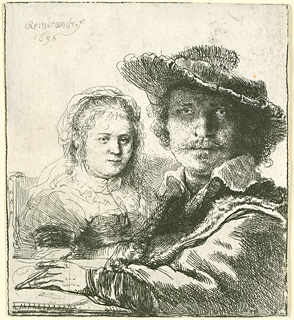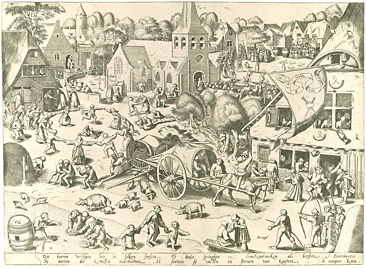Multiple Fascinations: Dutch and Flemish Prints from Bruegel to Rembrandt
Friday September 15, 2006 - Sunday December 10, 2006
Rembrandt van Rijn (Dutch, 1606-1669), Rembrandt and His Wife Saskia, 1636, etching. Gift of George W. Davison (B.A. Wesleyan 1892), 1947.D1.214.
From the satire of Pieter Bruegel's peasants to the contemplative gaze of Rembrandt's self-portraits, 16th- and 17th-century Dutch and Flemish prints delight and inspire.
As part of a Wesleyan University seminar, students selected 70 prints from the treasures of the Davison Art Center collection to discuss what fascinated them most. The exhibition explored 17th-century ways of ordering knowledge, narrative techniques, the representation of peasants, the Dutch landscape, and the evolution of the "unfinished" print. These multiple viewpoints presented new insights into one of the richest periods in print history.
 |
|
|
Frans Hogenberg (Flemish, ca. 1540-1590) after Pieter Bruegel the elder (Dutch, ca. 1525-1569),Kermis at Hoboken, ca. 1559, etching and engraving. Gift of George W. Davison (B.A. Wesleyan 1892), 1939.D1.162. |
